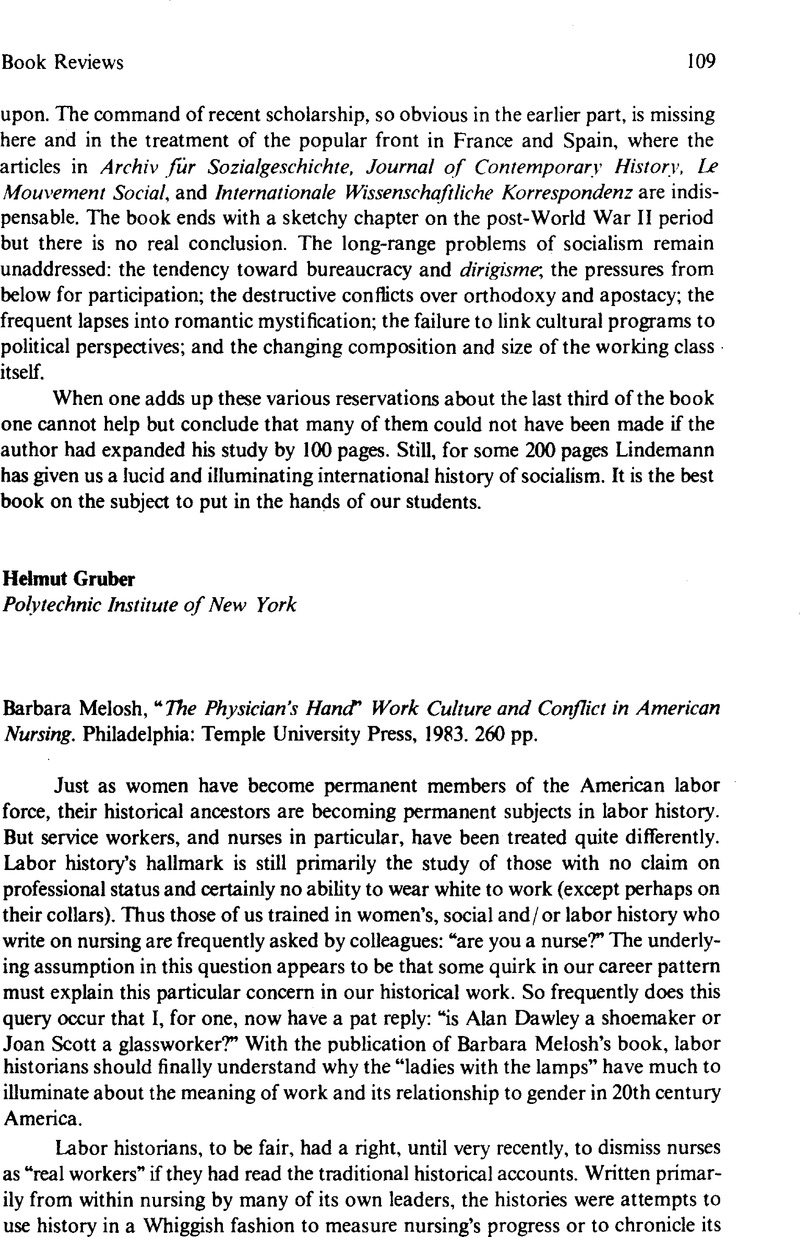No CrossRef data available.
Published online by Cambridge University Press: 16 December 2008

1. See. for example. Mottus, Jane E., New York Nightingales: The Emergence of the Nursing Profession at Bellevue and New York Hospital, 1850–1920 (Ann Arbor, 1981)Google Scholar; Davies, Celia. ed., Rewriting Nursing History (London and Totowa, N.J., 1980)Google Scholar; and Lagemann, Ellen Condliffe, ed., Nursing History: New Perspectives, New Possibilities (New York, 1983)Google Scholar.
2. Tilly, Louise A. and Scott, Joan W., Women, Work and Family (New York, 1978)Google Scholar and Tentler, Leslie Woodcock, Wage-Earning Women: Industrial Work and Family Life in the United States, 1900–1930 (New York, 1979)Google Scholar.
3. Benson, Susan Porter, “‘The Clerking Sisterhood’: Rationalization and the Work Culture of Saleswomen in American Department Stores, 1890–1960,” Radical America 12 (March–April, 1978), 41–55Google Scholar; Reverby, Susan, “The Search for the Hospital Yardstick: Nursing and the Rationalization of Hospital Work,” in Reverby, Susan and Rosner, David, eds., Health Care in America (Philadelphia, 1979)Google Scholar.
4. For the opposing view, see Wagner, David, “The Proletarianization of Nursing in the United States, 1932–1946,” International Journal of Health Services 10 (1980), 271–290CrossRefGoogle Scholar. For a study of the political complexities of the change, see Reverby, Susan, “‘Something Besides Waiting’: The Politics of Private Duty Nursing Reform in the Depression,” in Lagemann, , ed., Nursing HistoryGoogle Scholar.